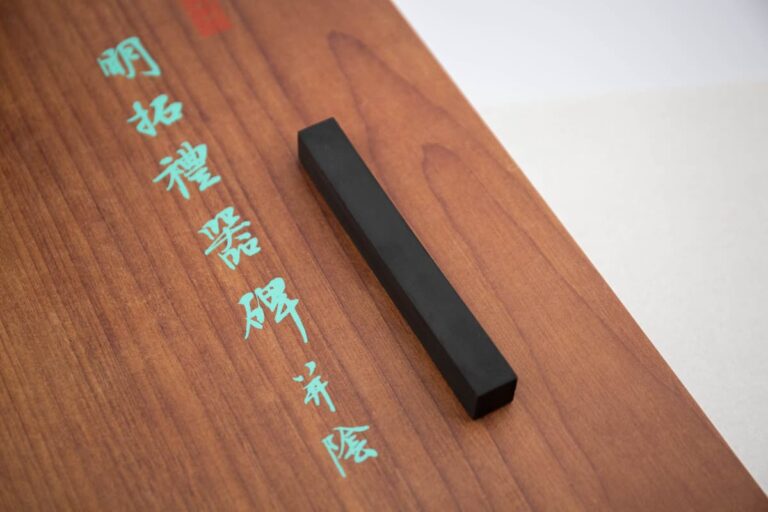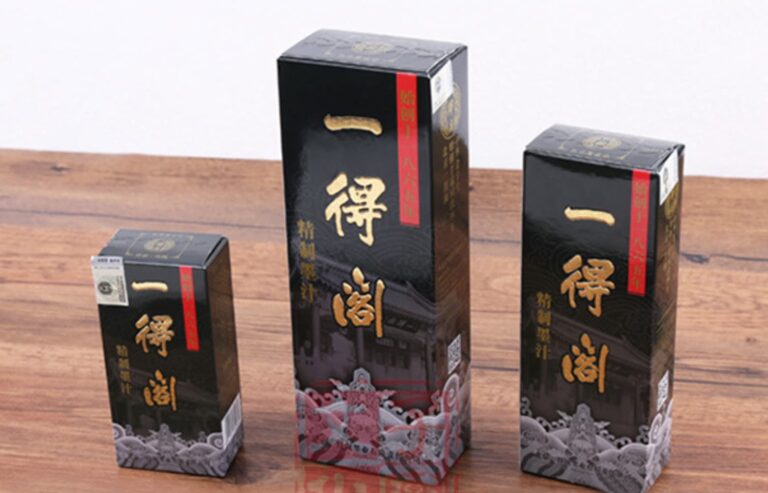Chinese Calligraphy Ink: Ink Stick vs Liquid Ink Guide
Ink Stick vs Liquid Ink Guide: Should you use an ink stick or liquid ink when learning Chinese calligraphy? This question has been asked by more than ten calligraphy friends on WeChat. To be honest, if I want convenience, I would definitely choose liquid ink. But if we’re talking about the ceremonial feeling of writing or getting richer color variations and better performance, I would definitely choose grinding ink with an ink stick and inkstone.
Why Grinding Ink Stick Works Better
Although grinding ink takes effort, the ink made from freshly ground ink sticks has lighter and more delicate glue content.
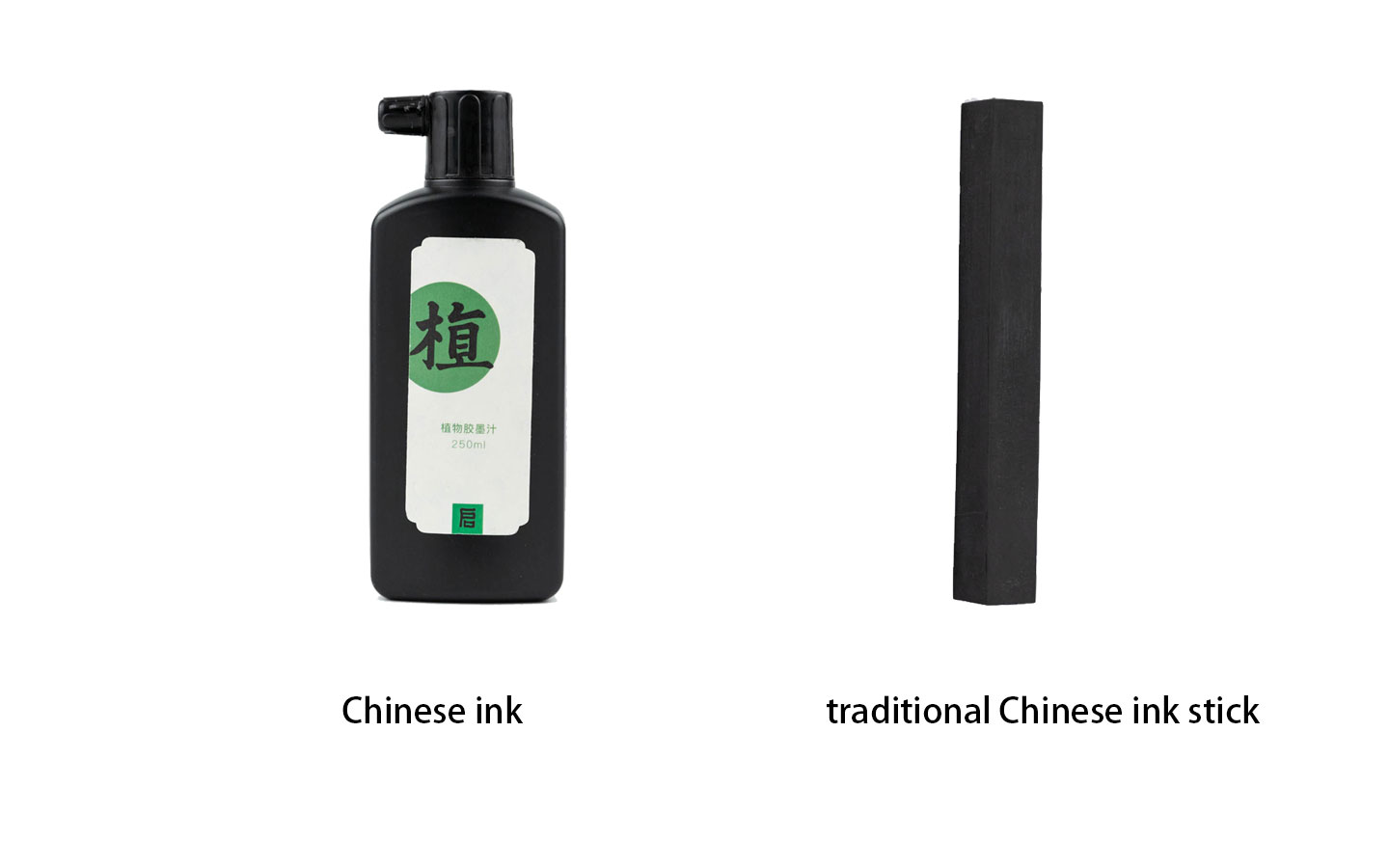
Think of it this way: liquid ink is like packaged noodles sold in supermarkets, while grinding ink is like fresh hand-pulled noodles just made in a noodle shop. The texture and quality are definitely different. Beginners might find it hard to notice the difference between liquid ink and ground ink, but for experts, the gap between these two types of ink is quite obvious.
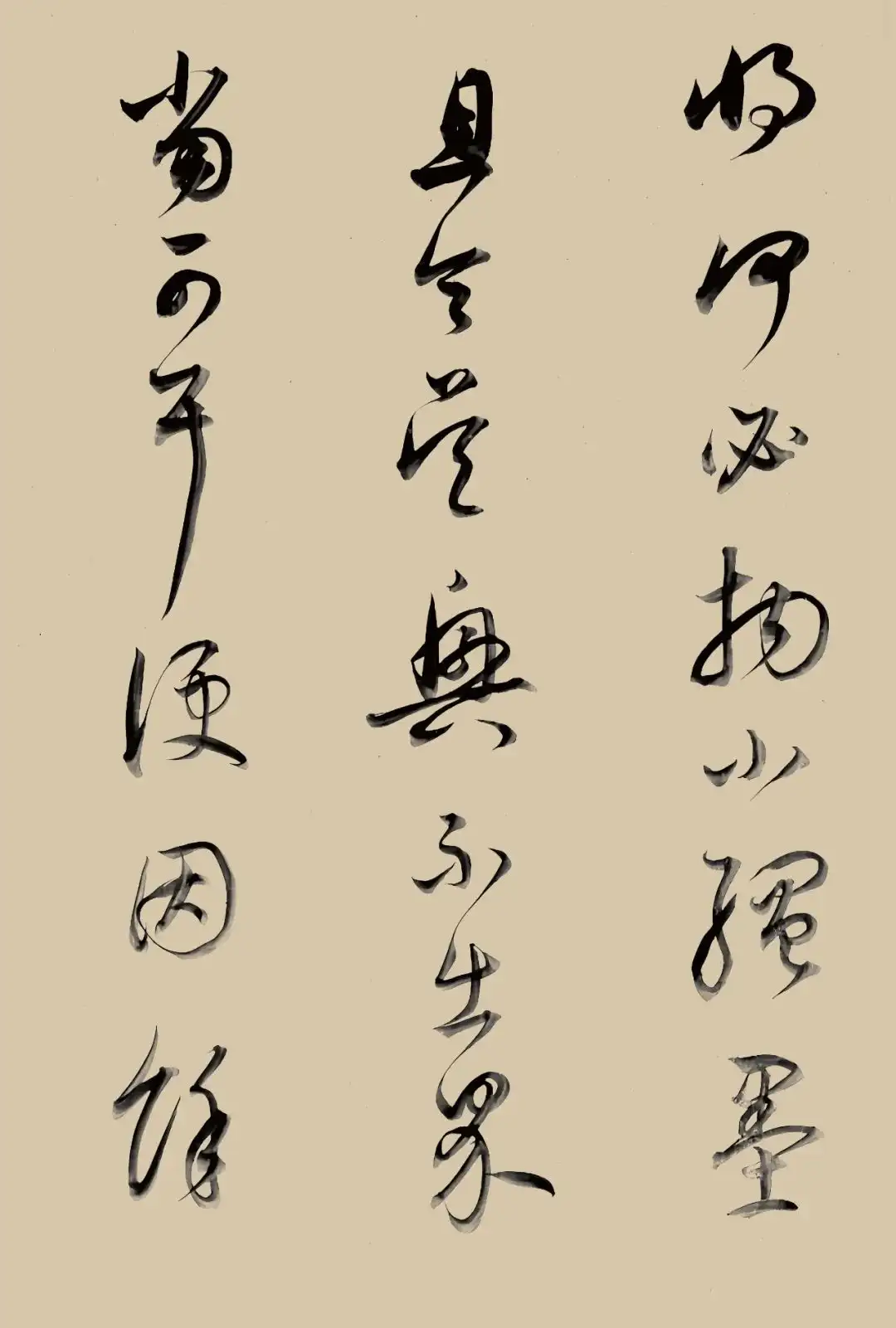
Image: Ming Dynasty Dong Qichang’s “Poems on Wuyi Mountain Painting and Copy of Mi Fu’s Calligraphy” scroll, Korean tribute paper, 37cm×488.5cm, Collection of Wuxi Museum (detail)
The image above shows calligraphy work by Dong Qichang, a famous calligrapher from the Ming Dynasty. If you carefully observe each character he wrote, you’ll notice that Dong Qichang paid great attention to ink color variations. By observing the ink tones, you can even guess when he dipped his brush after writing certain characters, and you can see which strokes used center brush technique versus side brush technique.
Expert Opinion on Ink Choice
Let me share some insights from Teacher Gudian’s article about whether liquid ink or ground ink is better for writing.
Here’s what Teacher Gudian said:
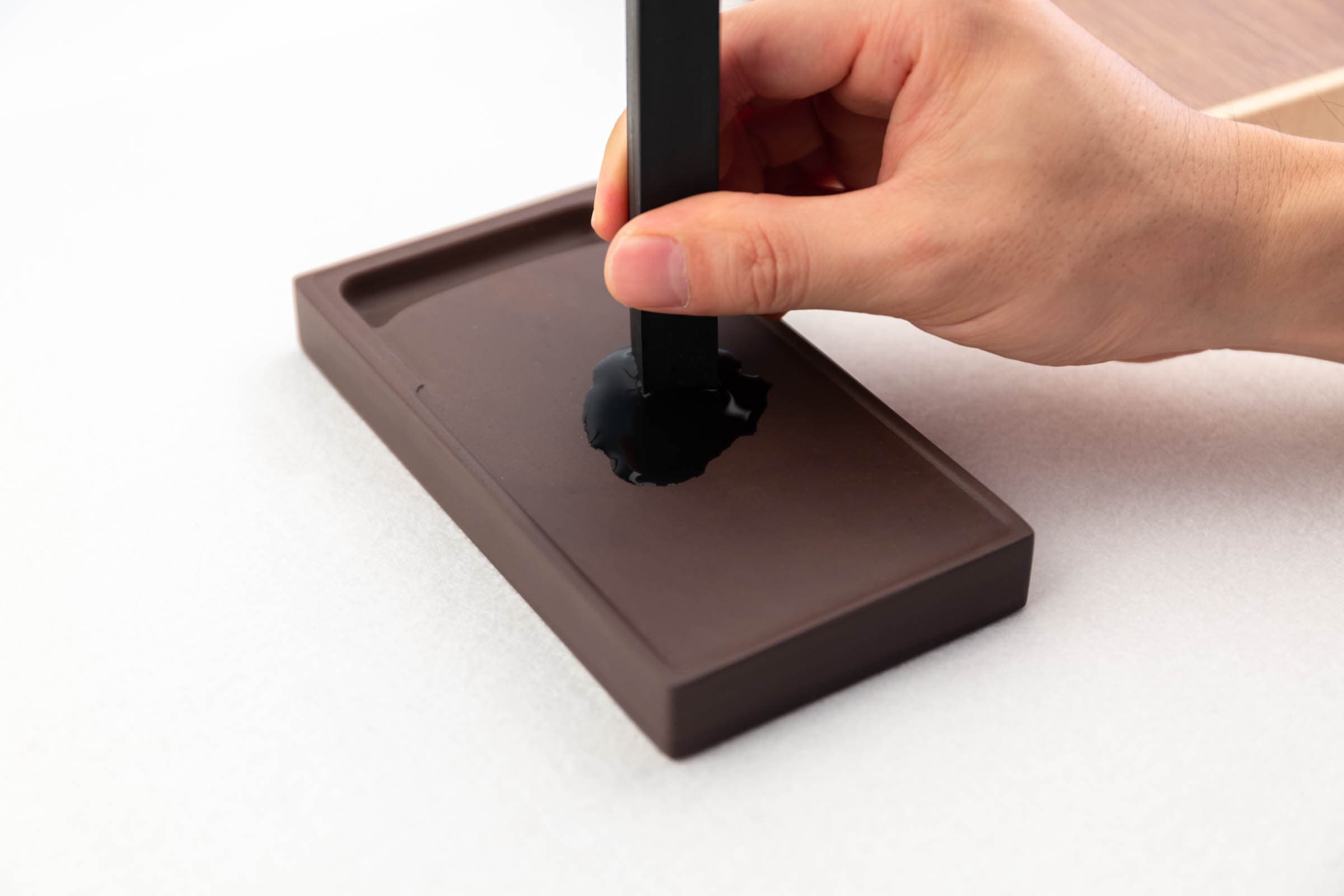
The answer is clear: Ground ink is better!
But explaining this clearly isn’t easy. Here’s a simple breakdown:
1. Better Brush Flow
Ground ink has less glue content, making brush movement smoother. Liquid ink contains more glue, which makes brush movement harder. If you add water to liquid ink, it becomes less black.
2. More Beautiful Colors
Ground ink has more attractive colors! And it gets more beautiful over time. Regular liquid ink often looks dead black, while ground ink offers many color variations.
3. Better Paper Compatibility
Ground ink adapts better to different papers. Many Xuan papers show average results with liquid ink but excellent results with ground ink. Some processed papers have smooth surfaces that liquid ink can’t penetrate, but ground ink works fine. This might be because ink ground on an inkstone produces finer particles.
Quick Grinding with the Right Tools
Grinding ink is actually quite fast if you choose the right inkstone. Duan inkstones and She inkstones are excellent choices. For example, the Beiling Yipian Hong Duan inkstone sold by Qi Ming Wen Fang is a high-quality, cost-effective Duan inkstone.
Qi Ming also provides some basic knowledge about liquid ink and ink sticks that might help you understand both options better.
Understanding Ink Materials
Black Soot Analysis
Black soot is black powder made from various oils heated in oxygen-poor environments. Common materials for making black soot include pine wood, tung oil, rapeseed oil, sesame oil, cottonseed oil, lard, whale oil, and mineral sources like coal and petroleum. Different materials produce different quality black soot. Here we’ll focus on the most commonly used ink-making materials: pine soot, tung oil soot, and carbon black.
Ink Stick Quality Analysis
Many factors determine ink stick quality, with ink color and particle dispersion being most important. Ink colors generally include black, purple-black, black-brown, and blue-black, with purple-black considered the best ink color.
Factors affecting ink color include:
- Type of black soot
- Size of soot particles
- Age of the ink
Pine soot commonly used in ink making generally appears blue-black, while oil soot appears black-brown.
The longer ink is stored, the more it gradually shows purple-black color. Although oil soot doesn’t have the ideal ink color, it has fine particles, good dispersion, and creates more shine on paper than pine soot ink.
Particle Dispersion Factors
Ink particle dispersion relates not only to black soot materials but also to ink-making conditions, glue amount, and storage environment. Since different manufacturers use different materials, formulas, and manufacturing conditions, ink stick quality varies.
Liquid Ink Performance Analysis
For people who write and paint, grinding ink takes time. Especially for calligraphy beginners or students, liquid ink provides great convenience.
Liquid ink’s main components are similar to ink sticks, but liquid ink needs electrolytes and preservatives to prevent settling and spoilage. These additives somewhat affect liquid ink quality. Originally, liquid ink used mainly animal glue, but synthetic glue has gradually replaced it in recent years, causing changes in liquid ink quality. Whether these synthetic glues and additives negatively affect artwork preservation needs further research.
Learn More About Ink
To learn more about liquid ink and ink sticks, you can check out Qi Ming’s previous article: “The 5 Best Chinese Ink Brands: Properties, Selection Criteria & Care Guide“
If you want to buy an inkstone and ink stick to experience grinding ink and the writing feel of ground ink, consider the Beiling Yipian Hong Duan inkstone and Wuming Pine Soot sold by Qi Ming Wen Fang. If you don’t know how to grind ink with an ink stick, check out this previous article: “Beginner’s Guide to Make Calligraphy Ink with an Ink Stick & Stone“





